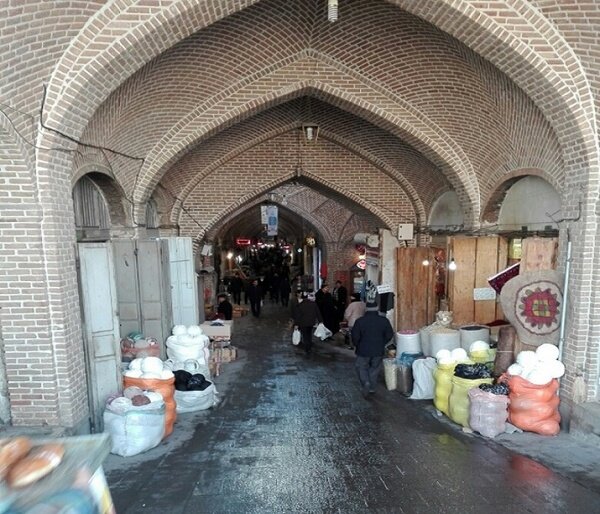INSUBCONTINENT EXCLUSIVE:
UNESCO-registered Bazaar of Tabriz.A restoration project has commenced constructing some vaulted ceilings which were collapsed in the 1970s
distorted the visual image of the Sadeqieh thoroughfare of the bazaar, Ahmad Hamzehzadeh explained.A jumble of interconnected covered
passages that stretches for about five kilometers, the bazaar has been a melting pot of cultural exchange since antiquity
The centuries-old bazaar was mentioned by Marco Polo when he traveled across the Silk Road in the Middle Ages.It embraces countless shops,
over 20 caravanserais, and inns, some 20 vast domed halls, bathhouses, and mosques, as well as other brick structures and enclosed spaces
Timur (Tamerlane), a Turkic conqueror, took it in 1392
Some decades later the Kara Koyunlu Turkmen made it their capital, it was when the famous Blue Mosque was built in Tabriz.The ancient city
retained its administrative status under the Safavid dynasty until 1548 when Shah Tahmasp I relocated his capital westward to Qazvin
During the next two centuries, Tabriz changed hands several times between Persia and the Ottoman Empire
public market district of an Iranian city
Located in a distinct quarter of a town, it was bustling and noisy by day in contrast to the quiet residential quarters
They were usually roofed for protection against the hot desert sun, either with a single roof, with individual vaulted cupolas or domes, or
with awnings.From another point of view, bazaars are also synonyms for foods, with their unmissable colorful stalls of vegetables, herbs,
Yet, most of these ingredients might be mysterious to a foreign eye
Teahouses help punctuate the walk and a traditional restaurant is a perfect place for lunch.Browsing through a traditional bazaar may
provide new experiences and fresh points of view on the ancient land
some traditional bakeries known only by locals and shopkeepers.People watching and even mingling with them in the bazaars is one of the best
ways to take the pulse of the country
Bazaars have traditionally been major economic and social centers in any Iranian city.AFM

